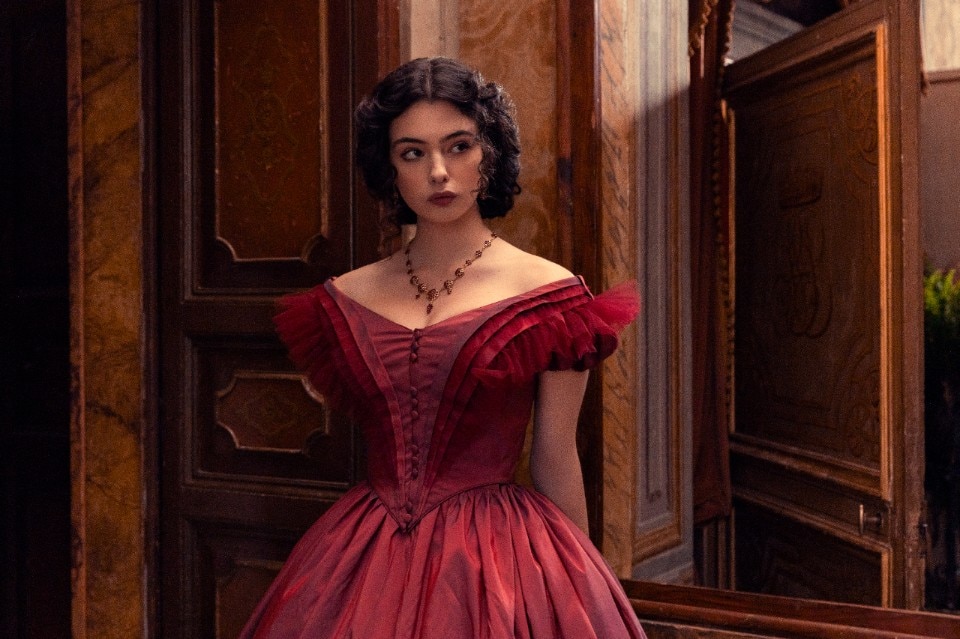The sunset of an era. Sumptuous, poignant, inevitable. Both Luchino Visconti’s 1963 film and the recent Netflix series reinterpret The Leopard, the literary masterpiece by Giuseppe Tomasi di Lampedusa (published by Feltrinelli in 1958), offering a captivating and mesmerized portrayal of the twilight of the Sicilian aristocracy during the years leading up to the island’s annexation into the newly unified Italian state. Both works aim to immerse the audience in a world of splendor and decay. Yet, beyond the obvious similarities, the stylistic choices and locations used present significant differences. In both the film and the series, two key locations dominate the narrative: the Palermo palace of Prince Salina and the Castle of Donnafugata.
The Palermo Palace of Prince Salina
In Visconti’s film, the Prince of Salina’s Palermo villa was recreated using Villa Boscogrande, which was restored for the shoot and chosen for its imposing architecture. It was accessed via a straight dirt path lined with half-columns topped with time-worn busts, leading to a main building with numerous French doors, shaded by white awnings and veiled by delicate embroidered curtains fluttering in the breeze. The interiors—designed with the collaboration of Giorgio Pes for the furnishings and Mario Garbuglia for the set design—were rich with brocades, frescoes, gilded mirrors, and Empire-style furniture, with green majolica floors, oval mirrors, and walls covered in pink and forest-green damask fabric.

In the Netflix series, however, the palace—filmed using various Palermo locations—maintains its grandeur but gains a more intimate and realistic feel. Entry is through an arch crowned by a stone leopard. The driveway is surrounded by bougainvillea and lush vegetation, while the façade is semicircular with a symmetrical double-ramp staircase in stone. Breakfast takes place in a room decorated with frescoes, gilded mirrors, and mirrored trumeau cabinets, with a table set with pastiere, cannoli, brioches, and almond pastries, illuminated by chandeliers and candelabras. The Prince reads the newspaper on a gilded wooden settee, while his daughter plays the piano. His study is a treasure trove of knowledge, filled with stacked books, wood paneling, and telescopes. Meanwhile, in the series, the Prince’s mistress’s bedroom is depicted with a lit fireplace and a bathtub illuminated by candelabras, creating an intimate and sensual atmosphere.
The countryside mansion
Donnafugata is a fictional location, but both productions situate it in Ciminna, with the town’s main square transformed to recreate the period setting. The Netflix series emphasizes the vastness of Don Fabrizio’s residence with a remark by Tancredi: “My uncle always said it would be vulgar to count them,” referring to the countless rooms in the villa. In contrast, the film’s dialogue differs slightly—when Angelica asks, “How many rooms are there?” Tancredi replies, “No one knows. Not even my uncle. He says that a palace where you know all the rooms isn’t worthy of being lived in".
In Visconti’s film, the Prince’s country estate is characterized by a massive terrace with a blue and yellow herringbone-patterned ceramic floor, furnished with wicker armchairs and a Savonarola chair. The interiors feature velvet drapes, damask wallpapers, triclinio-style sofas, candelabras, Chinese vases, embroidered cushions, and large central island poufs. The dining room stands out with its red and green striped wallpaper, lavishly set tables, and decorated plates, visually embodying the sensuality of food that radiates from Tomasi di Lampedusa’s novel.
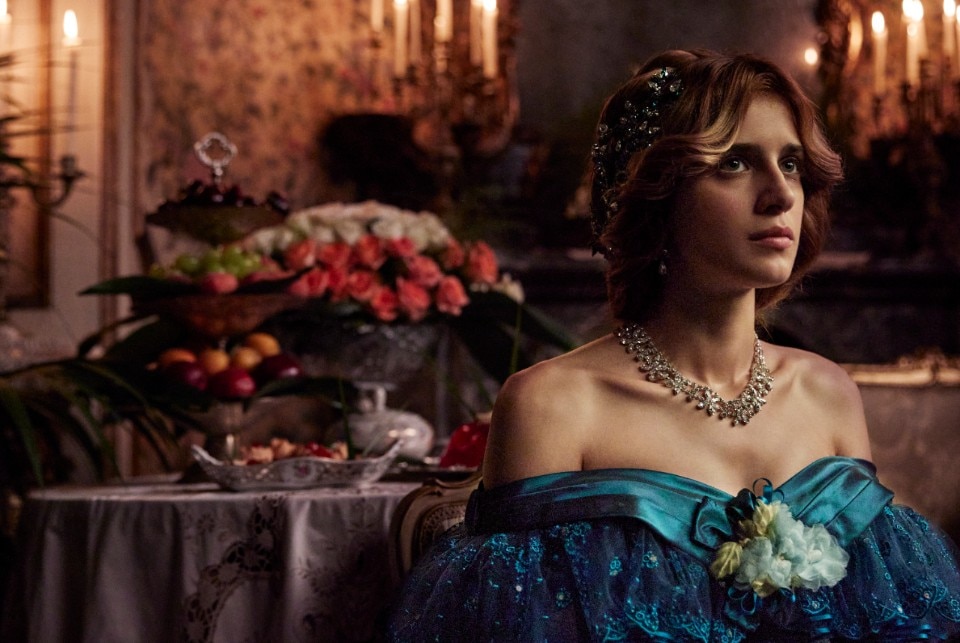
In the series, the palace is enhanced by a lush garden with fountains and prickly pears, while the interiors range from opulent halls to more decayed and dusty corners. In one scene, Angelica and Tancredi play hide and seek and discover a secret room, the "Room of Penances", filled with torture instruments and eerie paintings. Angelica gazes at herself in a mirror, as if trying to grasp the hidden history of the house. The Prince’s bathroom in the series retains the conversation with Father Pirrone from the film, with details like a floral screen, a white enameled cast-iron bathtub, and a shaving set with a bowl and brush.
The Ballroom, the mirrors, and the objects
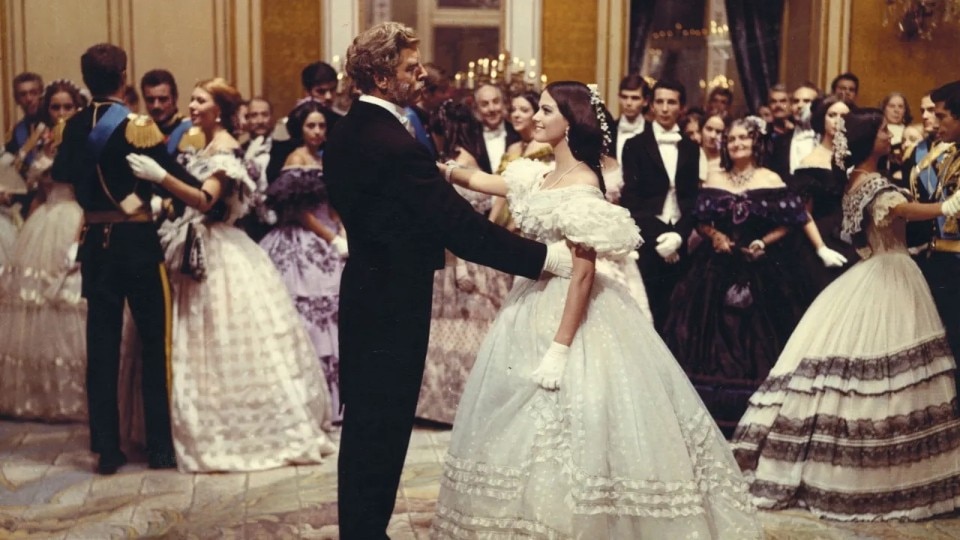
The ballroom scene is a pivotal moment in both versions. In Visconti’s film, it takes place in Palazzo Valguarnera-Gangi in Palermo, in an opulent hall illuminated by 10,000 candles, with walls adorned with gilded mirrors and Baroque frescoes. The Netflix series, however, relocates and films the same scene in Palazzo Chigi in Rome, opting for a brighter setting with fewer Baroque elements but equally grandiose. The hall’s double-height and elliptical balcony amplify the sense of magnificence.
A recurring motif in both adaptations is the mirror—an instrument of introspection but also a means of confronting one’s own allure or decline. Angelica admires her youth in the ballroom mirror, while during the dance at Princess Margherita’s palace, Don Fabrizio retreats to Don Diego’s study and gazes at The Death of the Just by Greuze, reflecting on his own mortality and the demise of an entire social class. Later, in the bathroom, he looks at himself in the mirror and silently weeps, fully aware of his inevitable end.
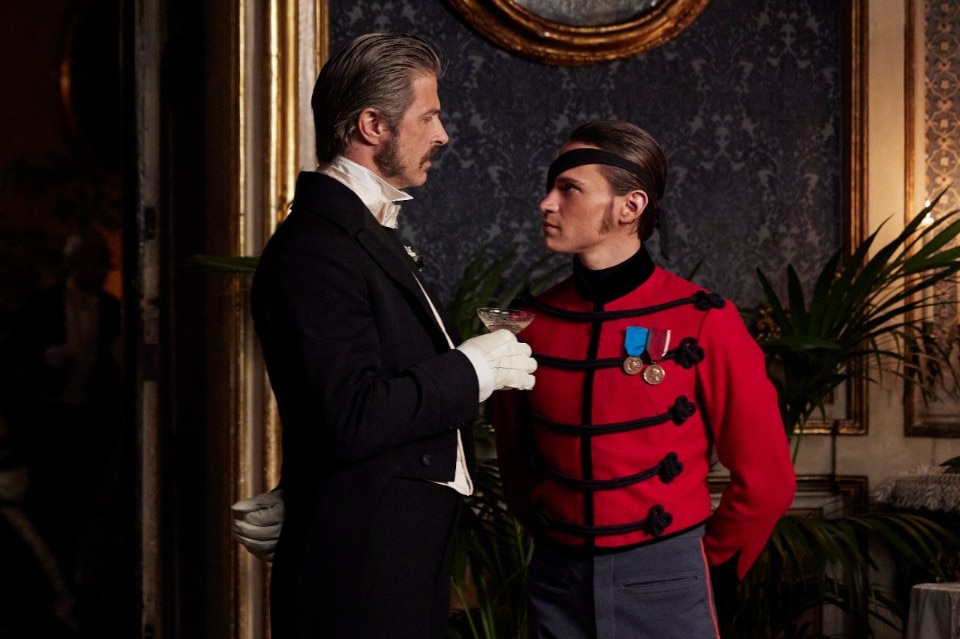
In the series, after the death of his son Paolo, the mirrors are draped in black lace, symbolizing not only mourning but also the transience of life.
A striking detail in Visconti’s film is a glimpse of a service room filled with ceramic chamber pots containing a yellowish liquid—a raw metaphor for aristocratic decay, contrasting with the grandeur of the palace.
Similarly, objects play a revelatory symbolic role in a scene in the Netflix series set in Turin. When speaking with Chevalley, who proposes that he become a Senator, the Prince, observing the gifts received from across Italy for the commemoration of unification—each representing the country’s multiculturalism—comments with resigned disillusionment about the Sicilian offering: "Everyone else has given something with a function: a saddle, a wool tunic. And what do we Sicilians offer? A coral ship that would crumble at the first contact with water. Pure aesthetics and vanity”.
The Architecture as Narrative
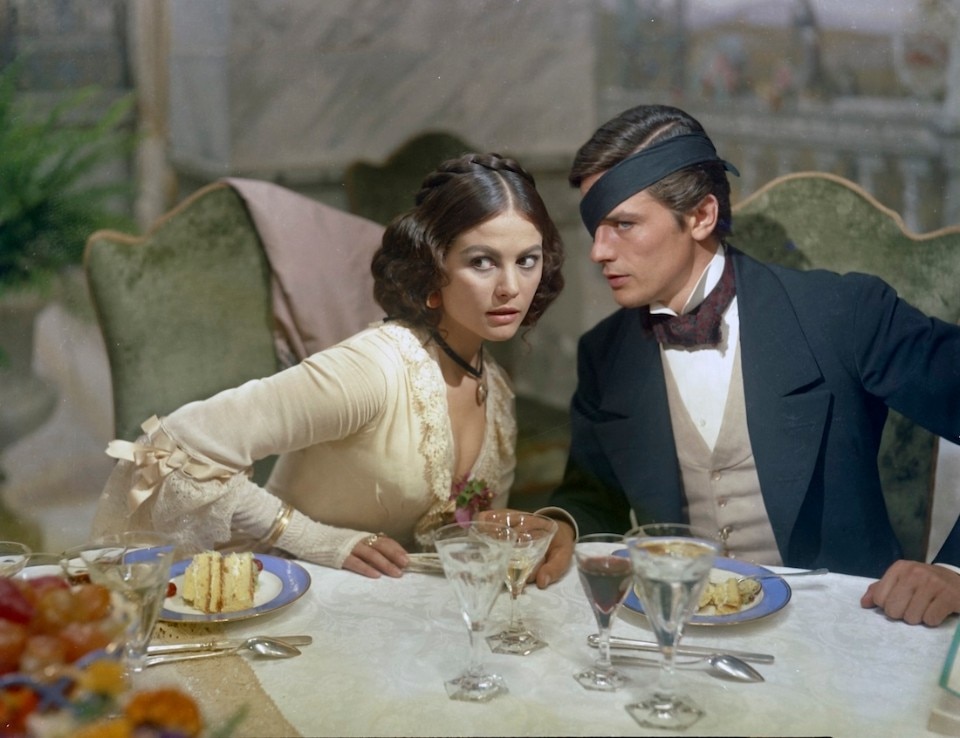
In both the film and the series, architecture, objects, and furnishings play a crucial role—not only in reviving the aesthetics of an era but also in giving vibrant, tangible form to the respective visions of their creators. Visconti’s film delivers a melancholic and empathetic portrait of the last of the Leopards—an aristocrat courting death (his own and that of a sinking civilization), fully aware that after him, only jackals and hyenas will remain. Meanwhile, the series, directed by Tom Shankland, Giuseppe Capotondi, and Laura Luchetti, elevates the character of Concetta (Benedetta Porcaroli), Prince Salina’s daughter—who was largely sidelined in the film—to a central role. She inherits her father’s legacy, almost suggesting that only a feminine sensibility can carry that world into the present and emotionally connect it to contemporary audiences.
It is no coincidence that on her birthday, the Prince gives Concetta his most precious gift: a leather case containing a telescope, along with a note: "Which lens do you want to look through? The one that makes the world seem big, or the one that makes it small?"
Opening image: Tom Shankland, Il Gattopardo, 2025. Courtesy Netflix Italia. Photo Lucia Iuorio.


